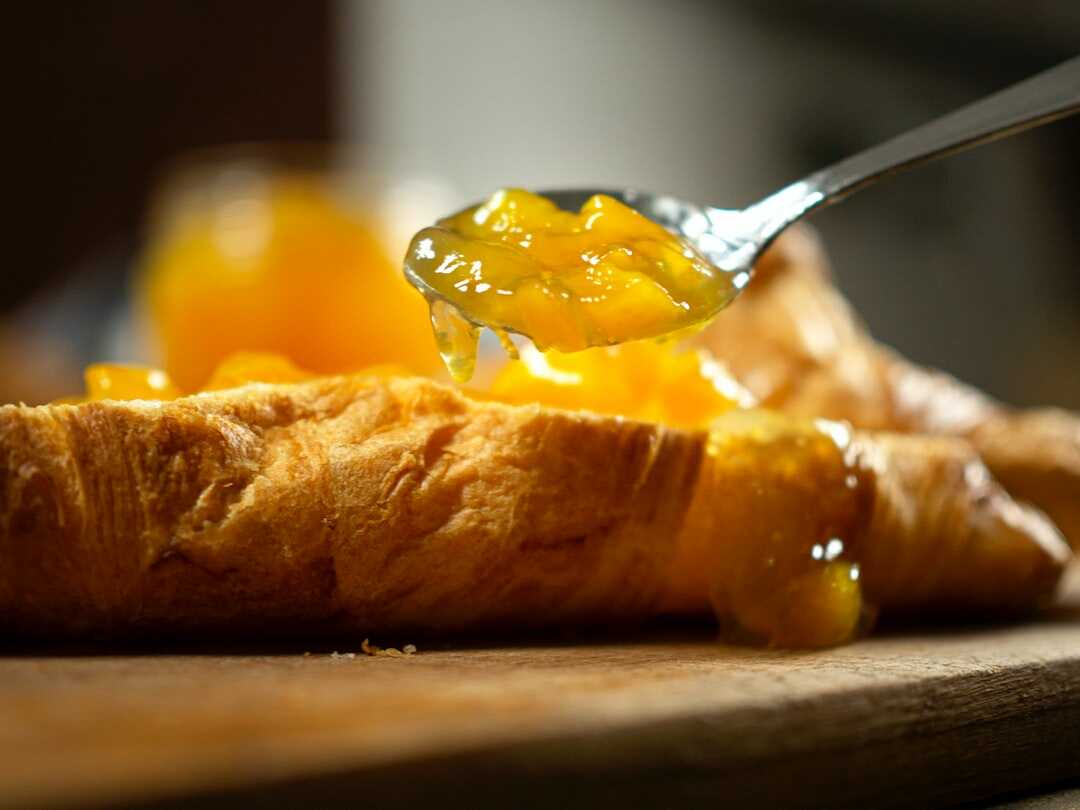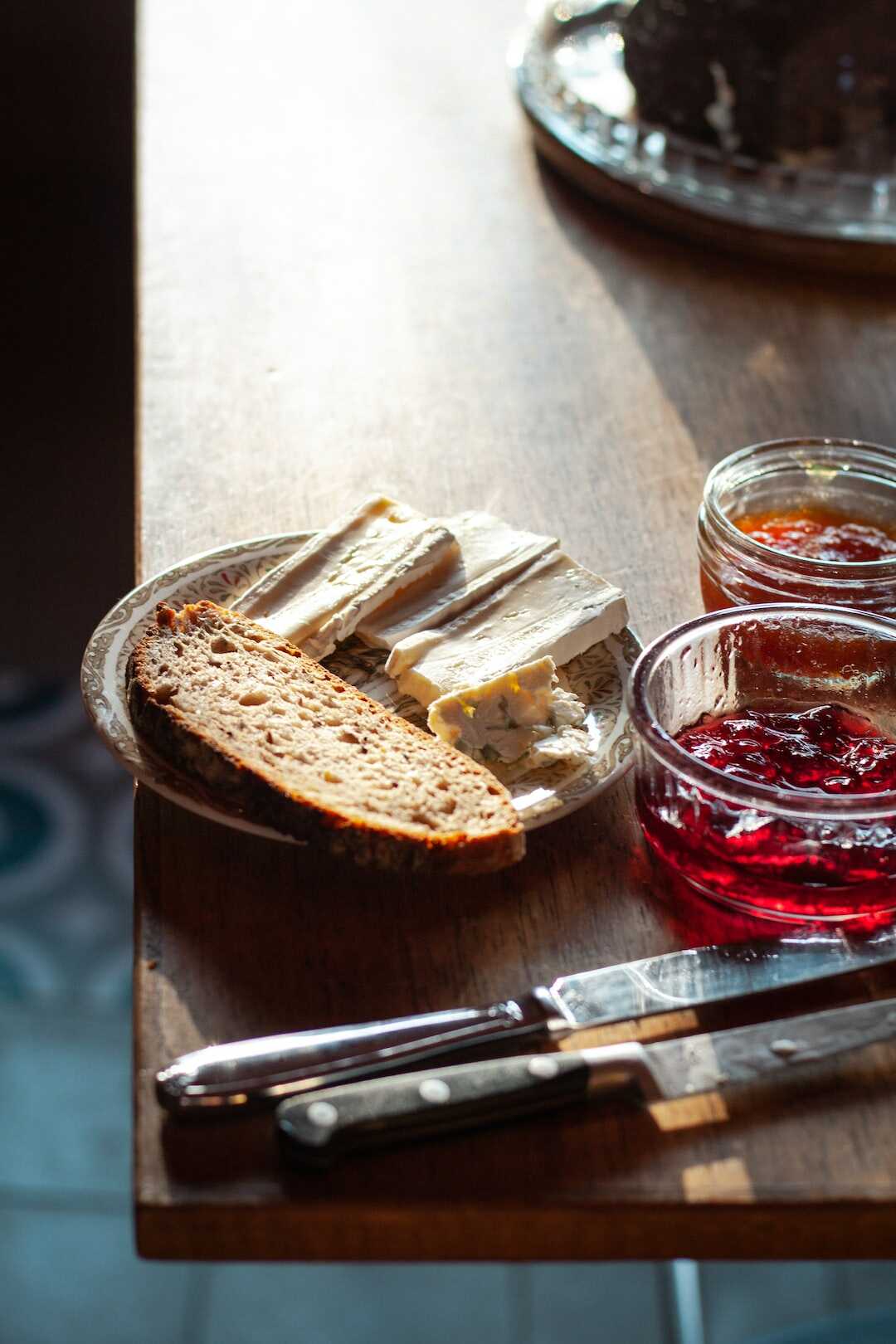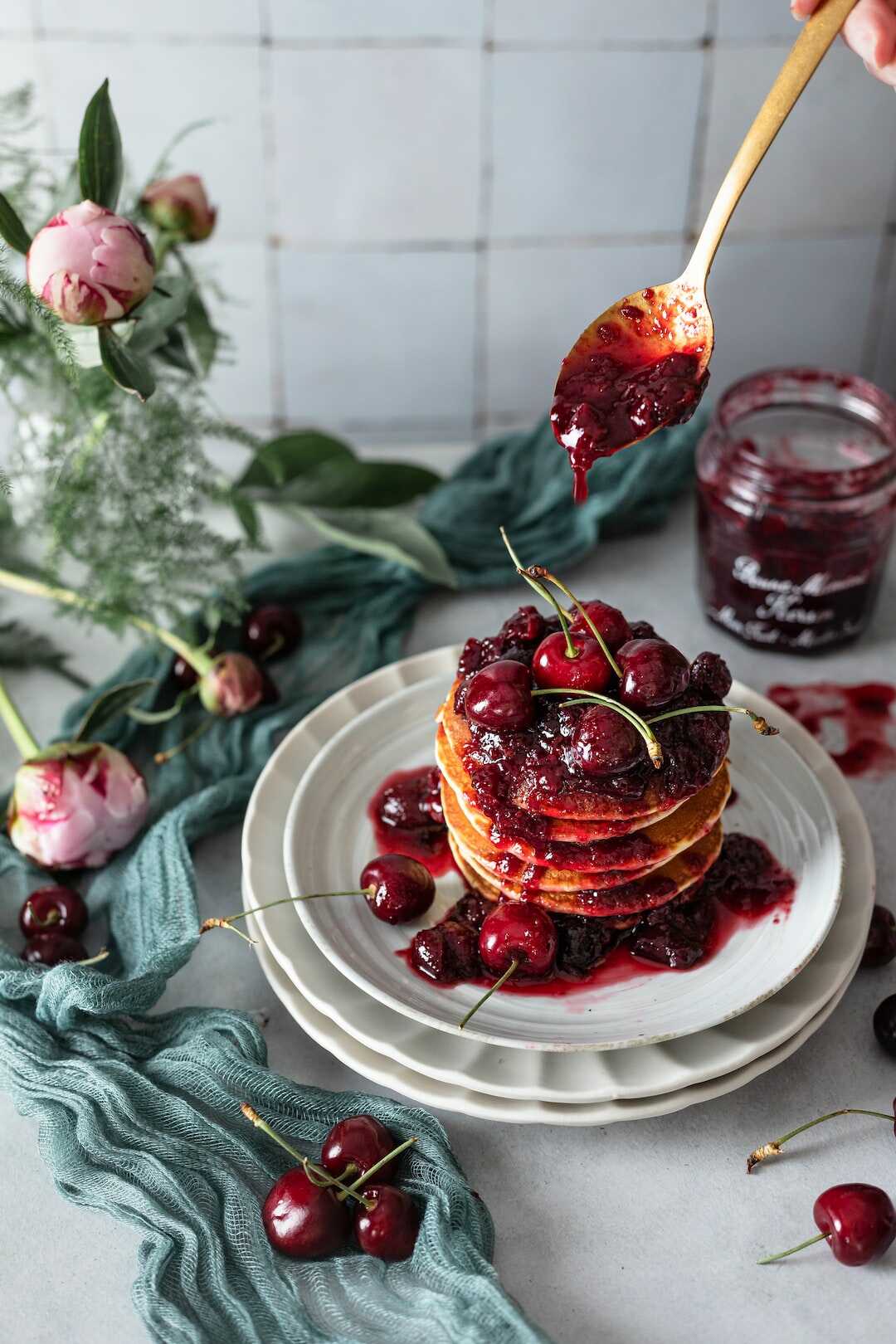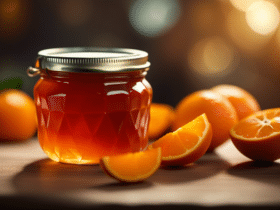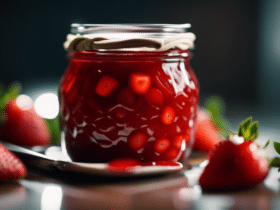With cornstarch To thicken a sauce that is too thin with cornstarch (maizena) it’s simple: in a bowl, put 2 tablespoons of cornstarch then pour a little cold water to dilute it .
When to return jam jars?

When the jam is ready, you can pour it still hot into jars. Once the jars are closed, it is very important to return the jars. This step is essential because it best preserves the jam.
How to return jars of jam? If jars with screw caps are used, they should be inverted until completely cooled. The other solution, more suitable for jellies, is to close the jars with a square of cellophane and a rubber band. But you can also wait for the jam to cool before putting it in a jar.
How to store homemade jams? Once opened, the shelf life of homemade jams is 15 days. Then you have to store it in the fridge and always use a very clean spoon to serve it.
What replaces pectin?

Not always easy to find, the coating pectin NH can be replaced by Vitpris (or Priz), a gelling agent for jam found in supermarkets.
Where to find natural pectin? Pectin is found in abundance in the peels of apples, peaches and citrus fruits. It is in the skin of citrus fruits that they are found the most because they are composed of 30% pectin. Unmodified pectin is a form of carbohydrate of plant origin with gelling and water-soluble power.
How to replace pectin X58? Pectin X58 is only used for milk formulas. In addition to being natural, the other advantage of pectin is its thermo-reversible action: all you have to do is heat your preparation to liquefy it. Agar-agar is also a natural gelling agent isolated from algae.
How to make up for jam that is too liquid with Vitpris?

If my jam* is too runny
- In a bowl, mix a sachet of Vitpris with 2 tablespoons of sugar.
- I for the contents of the bowl into a small saucepan with 10 cl of water and boil everything for a few seconds.
- I put the jam in a saucepan and bring it to a boil.
How to catch an elderberry jelly that is too runny? If the jam or jelly is too runny, boil it again to thicken it until the consistency is correct (see below). You can also add gelling powder.
Why is my jam too dry? Why does this happen? some fruits, of course, do not contain enough pectin, which prevents the formation of jam, the fruits are too full of water, and suddenly the fruit-sugar ratio is distorted or you have not cooked the jam enough . .
Which sugar with Vitpris?

the rest of the sugar For 4 pots of “Bonne Môman” of 370 g (+ around 100 g), you will only need half an envelope of Vitpris. I use caster sugar. Vitpris (Alsa brand) is a gelling preparation with natural fruit pectin for jams, jellies and fruit jellies.
How to replace gelling sugar? For your mousses, jellies, jams and any other preparation based on gelatin or pectin… Use agar-agar, a natural gelling agent of plant origin and tasteless. Here is a delicious elderflower jelly (therefore without pectin) prepared with 4 grams of agar-agar per liter of sweetened liquid.
How is gelling sugar used? Gelling sugar is used in traditional British recipes for jams, marmalades and preserves with the following formulas: 1:1: It is used for jellies and jams with equal weight of fruit and gelled sugar. 2:1: Used for canning to produce less sweetness.
How many Vitpris? 1. In a bowl, mix one sachet of Vitpris with 2 tablespoons of sugar. 2. Pour the contents of the bowl into a small saucepan with 10 cl of water and bring to the boil for a few seconds.
How do you know if the jam is ready?

Spoon test: Insert a cold metal spoon into the jelly and remove it from the steam. The jelly is ready when it comes off the spoon like a leaf. At the start of cooking, the drops of jelly are light and syrupy.
What to do when the jam is too runny? To make homemade jam more textured, simply add apple chunks, apple juice, or apple pectin. To do this, simply recook the jam and add apple pectin.
How to thicken cherry jam? To thicken your preparation, do not hesitate to add the juice of a lemon or a few pieces of apple. The pectin contained in these fruits will trigger freezing. You can also opt for Agar-Agar, an algae known for its gelling power and which does not alter the taste of food.
How to harden a blackberry jelly?
The first advice is to lengthen the cooking time. Indeed, if the jelly is too liquid, it may contain too much water. In this case, in order for the mixture to thicken, it is enough to cook the jelly a little more. The water will evaporate, the jelly will concentrate and solidify.
How to take jelly? If we think that our jelly or jam does not have the desired texture, we can compensate by pouring a little agar-agar into the jam (cold, at the rate of about 2 grams per 1 kg of fruit) before heat. -remove it, mix well and wait for the miracle to work when the jam occurs…
How to make up for a quince jelly that is too liquid? You should not remove the skin, seeds or pits; it is also in the seeds that the pectin is found which will help establish the jelly. If after all these tricks the jelly is still liquid, to thicken it just recook it for a few minutes with an apple without peeling it.
How to dose the agar?
To avoid making the wrong dosage, there is a simple rule to remember: 2 g of agar-agar (level 1 teaspoon) for 50 cl of liquid.
How to make Agar? Agar-agar is used during the recipe in a liquid or creamy preparation. For our mousse recipe, it must be added once the fruits have been mixed. Use 1 sachet of 2 g per 1/2 liter of preparation. Bring to the boil for a few minutes, mix and let cool.
How to lose weight with Agar-agar? In this case, it will suffice, for example, to mix a teaspoon with tea, herbal tea or hot chocolate. Then we will count 2g for 50cl. The agar-agar will thus give consistency to the preparation which will give a concrete “appetite suppressant” effect.
How to measure 2 grams of agar? All you have to do is bring a standard teaspoon. The most common dose of agar-agar, 2 grams, corresponds to a full teaspoon (see photo). Otherwise, the easiest way is to rely on manufacturers who often offer 2 or 4 gram pods.
Why lemon juice in jam?
Lemon juice retains the color of the fruit by preventing it from oxidizing when cut. The taste of the fruit stands out. Accelerates jam fixation by acting on pectin. Indispensable for jamming!
How to replace lemon in jam? To replace a teaspoon of lemon juice, add half a teaspoon of vinegar. As for vinegar, choose it with an unobtrusive taste. Rice or cider vinegar will work well.
When to put lemon in jam? Lemon juice contains ascorbic acid (vitamin C) which blocks oxidation. Added to the fruit at the start of cooking, it keeps its colors. It prevents the crystallization of sugar.
Why macerate the jam? It promotes the preservation of jams and makes pectin work. Pectin: this is what makes jams “set”, mixed with sugar. …After all, I don’t like to associate it with jams. Cooking in two stages: the fruit can be macerated the day before with lemon juice and sugar.
Why is my strawberry jam too runny?
Why is the jam too dry? The main reason the jam won’t set is that the fruit you made to make it is too soaked. In general, water-rich fruits are low in pectin, a plant fiber that has gelling properties.
Why macerate fruit for jam?
It promotes the preservation of jams and makes pectin work. Pectin: this is what makes jams “set”, mixed with sugar. …After all, I don’t like to associate it with jams. Cooking in two stages: the fruit can be macerated the day before with lemon juice and sugar.
Why put lemon in strawberry jam? Also prepare a lemon juice: it emphasizes the taste of the fruit, preserves its flavor, promotes the fixing of the jam, as well as its preservation, preventing the crystallization of the sugar in the jam.
Which fruit for jam? Apricot, pineapple, banana, peach, nectarine, cherry, lemon, quince, fig, strawberry, raspberry, currant, kiwi, mango, chestnut, melon, mirabelle plum, blackberry, blueberry, orange, pear, apple, plum, plum, rhubarb €¦ The choice is wide when it comes to fruit jams.
Does liquid jam keep?
The fact that the jam is liquid does not affect the conservation.
Can jam be frozen? When the jam is ready, divide it into containers and keep it in the freezer, hence its name “freezer jam”. … You can store jams in the freezer for up to a year. Once thawed, they can be stored in the refrigerator for a few weeks.
How to thicken jam? For the mixture to thicken, simply cook the jam a little more: the water will evaporate, the jam will concentrate and solidify.
How do you catch a jam that has gone sour? It’s hard to make up for a jam, but the one who doesn’t taste anything has nothing 🙂 So try recooking it by adding sugar. You can also use a lemon juice per kg of fruit or a few pieces of apple, both very rich in pectin.
How to make a soup thicker?
3 – Potato starch Another tip for thickening a soup: mix a tablespoon of potato starch and 10 cl of water, then pour everything into your soup and mix again.
How thick is a soup? You can thicken a soup by adding a little cornstarch. Tip: add it to a cold soup and mix well to avoid lumps.
How to thicken soup with cornstarch? Mix a little cornstarch in a tablespoon of water, pour into the soup, bring to a boil and stir for 40 seconds. The soup will thicken.
How to thicken broth? To thicken sauces, stews and soups Dissolve cornstarch or flour in a cold liquid (water, broth, milk, etc.). Slowly pour this mixture into the boiling liquid to thicken. Stir constantly and simmer. It is also possible to mix flour with a fat.

